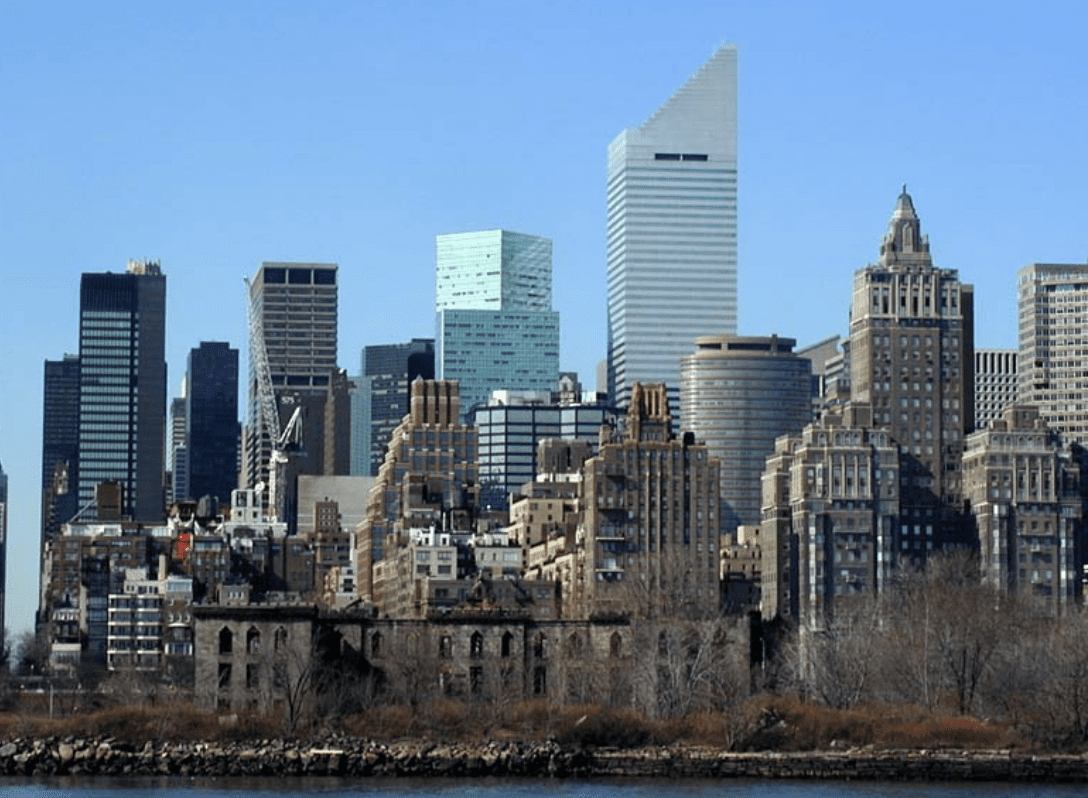Search Posts
Recent Posts
- Stages of Freedom event recognizes Owen Hwang for his thesis on Black student walkout at Brown U. May 9, 2025
- Rhode Island Weather for May 9, 2025 – Jack Donnelly May 9, 2025
- Outdoors in RI: For mom, Fish Parade, Beaches, Quahog Week, Mosquitos, URI student Sailors May 9, 2025
- Habemus papam: Americanus est! Pope Leo XIV, 267th Supreme Pontiff of 1.4 billion Catholics May 9, 2025
- The Real Housewives of Rhode Island coming to Ocean State May 8, 2025
Categories
Subscribe!
Thanks for subscribing! Please check your email for further instructions.

On PBS’s “High-Risk High-Rise” – David Brussat
by David Brussat, Architecture Here and There, contributing writer
Photo: Citycorp Center (1977) is the tallest building in this scene on New York’s Midtown district. beneath it is the Lipstick Building, designed by John Burgee and Philip Johnson. (wirednewyork.com)
Editor’s Note: We publish this on its regular schedule, and after the second serious and fatal fire in a brick “”high-rise” in a month, this one where most victims were found in stairwells, on every floor as smoke traveled the entire height of this 90 story building.
A friend alerted me to a “Nova” special being aired today (through Feb. 2) called “High-Risk High-Rise.” I watched it, and it was as slick as you’d expect from PBS, but I could not help noticing its biases and omissions.
Of course, since a condo tower of 12 stories had collapsed last June in Florida, it was mostly about building safety from fires, hurricanes and earthquakes. Oddly, however, the documentary neglected to mention the Surfside disaster that killed 98 and is tied for third deadliest structural failure in U.S. history.
Don’t production schedules allow a line or two to be squished in for something so painfully pertinent? Maybe not. Still, Surfside appears to have fallen of its own accord, for reasons still under investigation rather than the causes that caught the attention of the documentary’s producers. (See “Max building fail in Miami.“)
Here is the show’s thesis statement:
[A]s most major cities become crammed cheek to jowl with tall buildings, as we spend more of our lives looking down on the world below, will we begin to lose our sense of place, of neighborhood, of community? Or can tall buildings begin to embrace a more humanistic vision, one that stresses livability, interactivity, and eco-responsibility?
Some designers are certainly trying new ideas, but as we build skyward at a staggering rate, there is a more basic question. What have we learned, over the decades, about whether we can make tall buildings as safe as they can be? Can we ultimately trust them with our lives?
Will we begin to lose our sense of place, etc.? We already have lost it in so many places. Tall buildings are notoriously sterile. Can highrises, especially skyscrapers, be more humanistic? Perhaps. The easy way would be to make tall buildings less oppressive and more attractive, as was conventional before modern architecture. Architects nowadays seem more interested in challenging the laws of physics.
As to whether highrises can be made safe, why not first try to avoid challenging the laws of physics. Another solution – which seemed to strike many people as obvious in the aftermath of 9/11 – is to stop building skyscrapers at all. That possibility is dismissed out of hand. The documentary suggests that it took years to summon up the nerve to build tall again – not till after 2008 and the Great Recession. Not so. Going up bypassed the terrorist rationale for not going up in a nanosecond. Going up is the only way to achieve the necessary density in cities, according to every expert interviewed for the show. And yet the 54,150 per square mile density of Paris’s cheek-by-jowl six- and seven-story buildings is not all that much less dense than the 74,780 per square mile density of Manhattan. The number of towers set on plazas may explain a lot. They are not “cheek by jowl.” Subtract Central Park and equivalent densities might be achieved.
“[T]he only true way to address it is going up in height” is the refrain repeatedly asserted throughout. Not so, methinks, and given the curb appeal of Paris, heeding its lessons might help city planners kill two birds with one stone – by making cites beautiful without having to make them unsustainable.
Perhaps the major omission of “High-Risk High-Rise” is the eco-irresponsibility of skyscrapers, which are environmentally unsustainable on many different levels. This topic is foreshadowed early in the documentary when it wonders whether skyscrapers might “begin” (again!) “to embrace a more humanistic vision, one that stresses livability, interactivity, and eco-responsibility?” But then the topic is generally ignored, except for a segment about a Bloomberg headquarters building whose elevators stop at only nine of its 25 stories (except for the disabled, who can get off on any floor). Exercise for employees is supposedly the motive.
From all I’ve seen and read, architects believe they are already addressing climate change, above every other concern except perhaps those of “equity” and “inclusion.” Beauty remains the issue that dare not speak its name.
When it comes to safety, the documentary seems to want to have it both ways, declaring that tall buildings have never been safer while, at the same time, raising the hair on viewers’ necks with warnings, backed by scary music, of the dangers faced by those in and around buildings that could tumble at any time.
One segment was especially dire. The Citycorp Center (1977), in New York, which we all recognize from its white triangular prism of a crown set on its side, has an inventive bracing structure to counter high winds. Engineering student Diane Hartley of Princeton (called “Sonny” by the narrator) questioned the bracing designed by prominent structural engineer William LeMessurier. The documentary’s mashup of voices from the narrator and various experts darkly intones the tale in a key of D-minor:
[The student] tells Bill, you know, my numbers say that the building could fall over. And LeMessurier tells the student “Nice story, sonny, but, uh, go check your numbers again. …
LeMessurier began to wonder if the student might be correct. “I pursued this and found out some very awesome and frightening facts.” He discovered that winds striking the building diagonally rather than face-on could increase the stress on some of the V-braces by 40 percent or more. Then he realized that during construction his office had permitted contractors to bolt the braces together rather than welding them as he had originally specified. He calculated that winds in excess of 70 m.p.h. striking the corners of the building could sever the bolted connections. ‘I came to the conclusion that a storm that had a probability of occurring once in 16 years would cause the building to fail, and collapse. I can’t live with that.’ LeMessurier recommended welding six-foot-long steel plates on either side of the bolted connections to strengthen them. This would certainly solve the problem, but would take weeks to finish.”
The city drew up plans to evacuate not only the building but the ten square blocks around the building, “just in case,” states LeMessurier, “the building falls over. Can you imagine!” In August 1978, as work on the fix began, Hurricane Ella headed for New York. There was no way repairs could be done in time.
Thankfully, Ella veered out to sea. “You know, ultimately it worked out,” said the engineer, “but it was a very dangerous situation.”
Whew!
The documentary makes sure we all shudder at the long list of hurricanes and earthquakes that have toppled tall buildings in recent decades. Watch out, California! But really, folks, not to worry!
It seems to me that, brilliant as our corps of building engineers is, not to mention our architects, last year’s lesson of Surfside, with its seeming quantum of human error, rattles my nerves far more than the forces of Mother Nature.
_____
To read other articles by David Brussat: https://rinewstoday.com/david-brussat-contributing-writer/

My freelance writing and editing on architecture and others addresses issues of design and culture locally and globally. I am a member of the board of the New England chapter of the Institute of Classical Architecture & Art, which bestowed an Arthur Ross Award on me in 2002. I work from Providence, R.I., where I live with my wife Victoria, my son Billy and our cat Gato. If you would like to employ my writing and editing to improve your work, please email me at my consultancy, [email protected], or call (401) 351-0457
